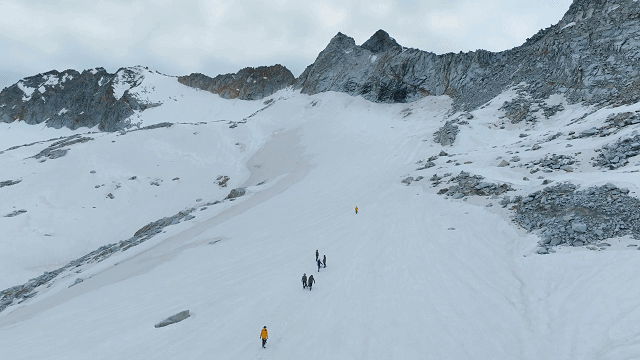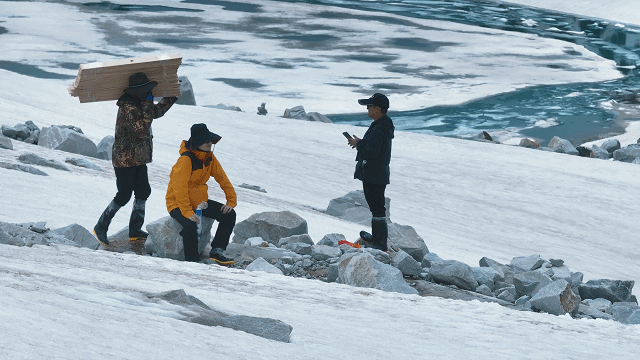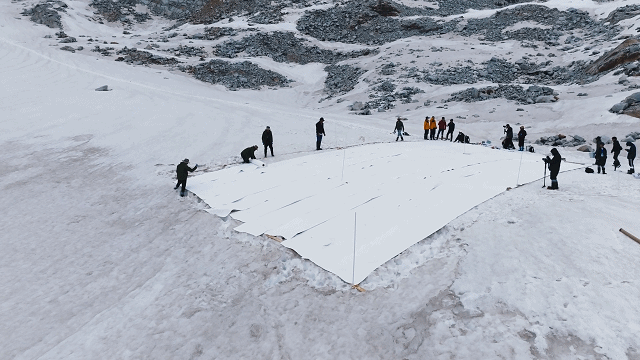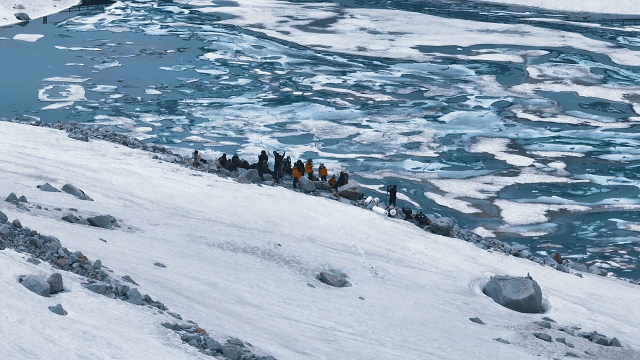Tencent Supports Innovative Nano-material Experiment on Dagu Glacier in Race to Stop Ice from Melting
A small team of scientists from Nanjing University led by Professor Zhu Bin is trying to cover a small area of the Dagu Glacier, located 5,000 meters above sea level in southwestern China, with a thin white sheet of material in an attempt to prevent the glacier from melting. This is another classic case of David versus Goliath. However, the Goliath in this case is not the glacier itself, but rather the effects of global warming that are causing it to melt.

Tucked inside snowcapped mountains and primitive forests, Dagu is home to many different plants and animal species. The glacier was only discovered in 1992 through satellite images and it has been a popular tourist destination since the area was opened to visitors in 2010 with around 200,000 visiting the glacier each year. The influx of tourists has brought benefits to the locals of villages living around Dagu but what the future holds for the glacier remains a matter of concern.
Dagu is one of the ‘youngest’ glaciers but it is suffering the same fate as its more mature counterparts around the world. Climate change is causing glaciers to melt at an alarming rate. Millions of years in the making, Dagu has shrunk 70 percent in just a few decades. The situation is dire as the effects of melting cannot be reversed. There is an urgent need for action to prevent the loss of the region’s ecology which the mountain communities depend on.
Dagu Glacier changes: July 2005 vs. July 2023.
Professor Zhu Bin is a materials scientist, a research area that specializes in the studies of the properties and structure of different materials. He believes he has a solution that will help to slow down the rate of melting on glaciers until a longer-term solution can be found – radiative cooling with a nano-thin material he developed from eco-friendly cellulose acetate (CA).
“The technology will, on the one hand, deflect the heat from direct sunlight away from the glacier. At the same time, the glacier’s own energy can be radiated outward through the porous material to keep temperatures low and slow down the melting rate,” Professor Zhu explained.
Scientists elsewhere have experimented with conservation methods using different types of materials to blanket and insulate glaciers with varying degrees of success. However, Professor Zhu says the new material is different because of its higher reflective rate of over 92 percent compared with 70 percent reached in other initiatives. Also, the technology can radiate energy beyond the earth’s atmosphere into space, resulting in more effective cooling.
After obtaining promising data from laboratory experiments on snow, ice and even ice cream, Professor Zhu and his team began conducting tests on glaciers.
“In our controlled experiments, we laid about 200 square meters of material and was able to slow melting by three to four times compared to the rate of melting without the film. When we got the data, we were very excited.”
Prof. Zhu's team conducted their first experiment in Dagu Glacier in August 2022.
The experiment was later replicated on a larger scale at Dagu in August 2022, marking the largest glacier conservation effort to date using the new material. Tencent made the project possible through a sponsorship under its Sustainable Social Value Innovation strategy. The company’s Carbon Neutrality Laboratory is providing practical support.

“The melting glacier can affect our entire ecosystem. The flowers, fauna, lake and every living organism in the entire scenic area will be impacted. Nanjing University’s effort to develop this new, high-tech material to protect glaciers and the environment is motivating. The more people know about it, the more it will help raise awareness on the need to protect our environment. This is a very meaningful project,” said Shihai Huang, Head of Dagu Glacier Management Bureau.
“This project demonstrates interdisciplinary collaboration at its best,” he proudly shared after putting their research into practice outside of the laboratory for the first time.
All of my previous experiments have been conducted in the laboratory. I have never undertaken such a large-scale experiment in the field outside of the laboratory. It is remarkable that a team of specialists from various disciplines came together and collaborated seamlessly to take this project off the ground.”

It will take three to five years to assess the effectiveness of the new material. If the data is positive and the material can be produced at reasonable cost, it could be pivotal in helping to preserve Dagu and other glaciers in the world. There could also be opportunities for industrial application.



